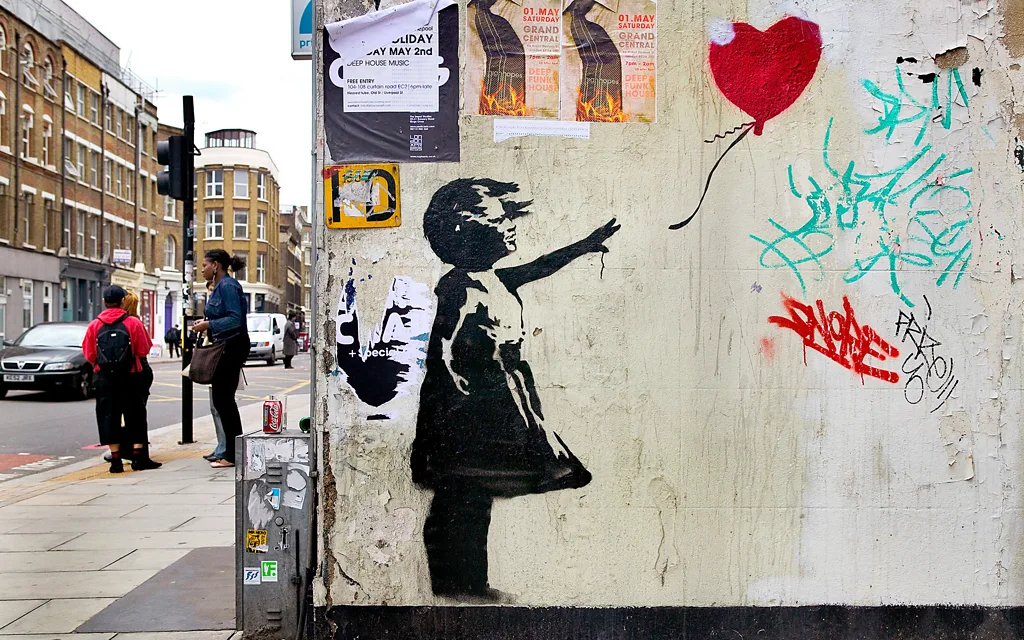In the world of street art, few names resonate as deeply—or provoke as much thought—as Banksy. Though his identity remains a mystery, his impact is unmistakable. Often seen as a rebellious voice for the people, Banksy’s work is more than just stencil graffiti and political satire. It is layered with intellectual weight, often drawing directly from the realms of philosophy, ethics, and social theory.
This is the core of Banksy philosophy: art that is accessible yet challenging, poetic yet piercing. Through five of his most powerful works, we dive into how Banksy blends visual provocation with centuries-old philosophical ideas.
The Banksy Philosophy: Where Art Meets Thought
Banksy is a rare figure who turns city walls into blackboards for public thought. His stencils borrow from the language of activism, humor, and absurdity, but they also echo the voices of Plato, Schopenhauer, Foucault, and Simone de Beauvoir. While many see street art as anti-establishment, Banksy philosophy elevates it to a higher calling, inviting mass audiences to reflect on what it means to hope, to resist, to connect, and to dream.
1. Girl with Balloon – Hope and the Human Will

One of Banksy’s most iconic works, Girl with Balloon, shows a young girl reaching for a heart-shaped balloon floating out of reach. Accompanying some versions is the phrase: “There is always hope.”
On the surface, it’s a simple image of loss and innocence. But it also echoes the thoughts of 19th-century philosopher Arthur Schopenhauer, who believed human life is driven by an unrelenting “will”—a force of constant longing that is never truly satisfied. The girl’s gesture is tender, yet futile. The balloon represents a desire, always slipping away.
In 2018, when Banksy secretly installed a shredder into a framed copy of this artwork and partially destroyed it during an auction, he brought Schopenhauer’s bleak outlook to life. What better way to illustrate the futility of clinging to ideals than by literally destroying the very symbol of hope before an audience?
2. Flower Thrower – Beauty Turned Into Resistance
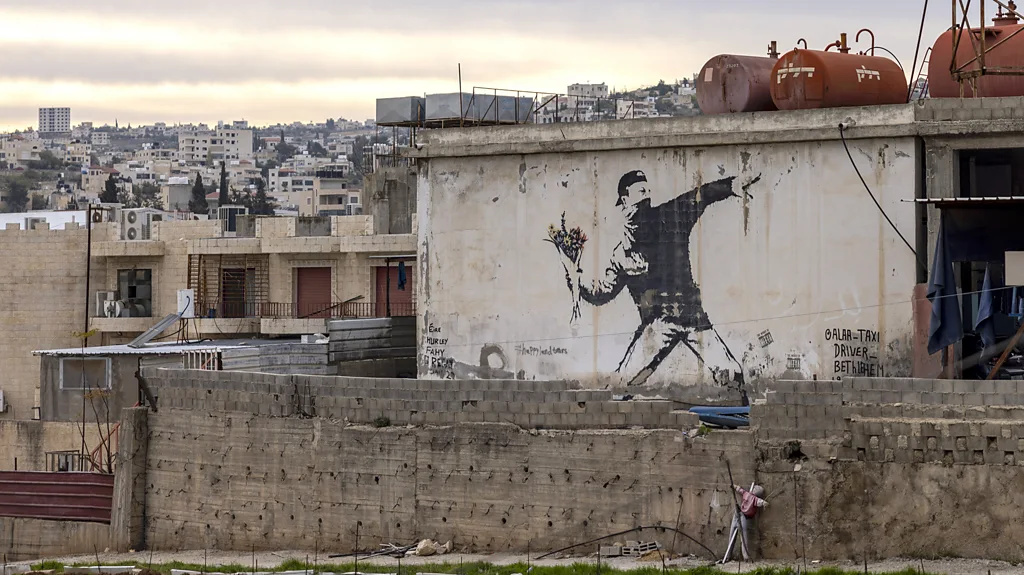
Flower Thrower, also known as Love is in the Air, shows a masked protester about to hurl a bouquet like a Molotov cocktail. The paradox is clear: the gesture of aggression is disarmed by the softness of the object.
At first glance, it aligns with Mahatma Gandhi’s philosophy of nonviolence (Satyagraha). But the Banksy twist complicates this. The thrower’s posture is angry and explosive. It’s not calm resistance—it’s beauty used as a weapon. Here, Banksy philosophy challenges even peaceful doctrines, suggesting that in today’s world, even ideals must fight to be seen.
3. One Nation Under CCTV – Surveillance as Modern Control
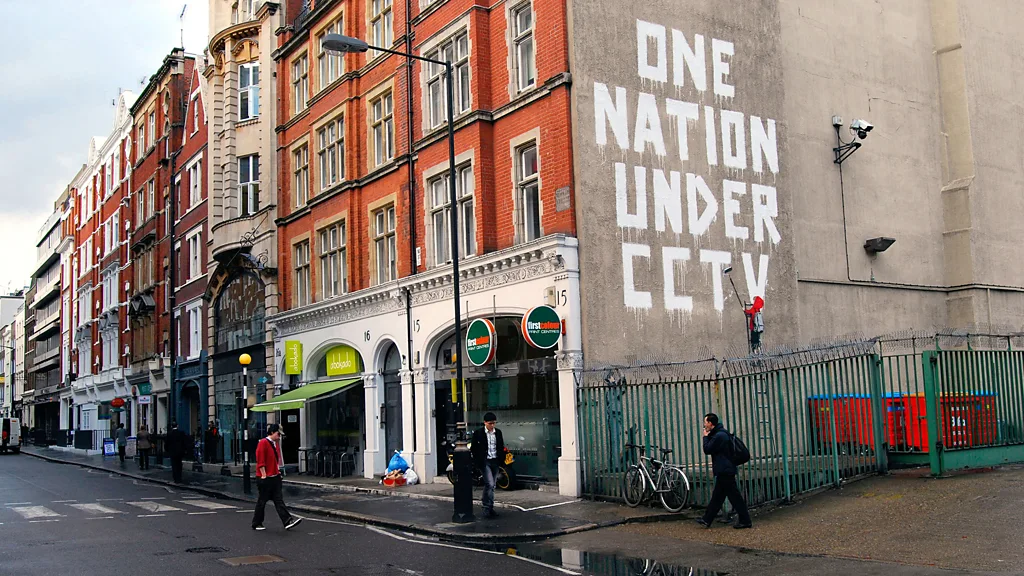
In this 2007 mural near London’s Oxford Street, Banksy painted a child writing “One Nation Under CCTV” while being watched by an officer and his dog. Above them, an actual surveillance camera protrudes from the wall, watching the watchers.
This artwork visually captures Michel Foucault’s concept of the Panopticon, a metaphor for a society where everyone is under constant observation. Foucault believed that surveillance is a form of control, where people discipline themselves because they believe they’re always being watched.
Banksy philosophy here is stark: in a world of digital tracking, CCTV, and mass data collection, freedom becomes an illusion. Even resistance is monitored.
4. Mobile Lovers – Love in the Time of Disconnection
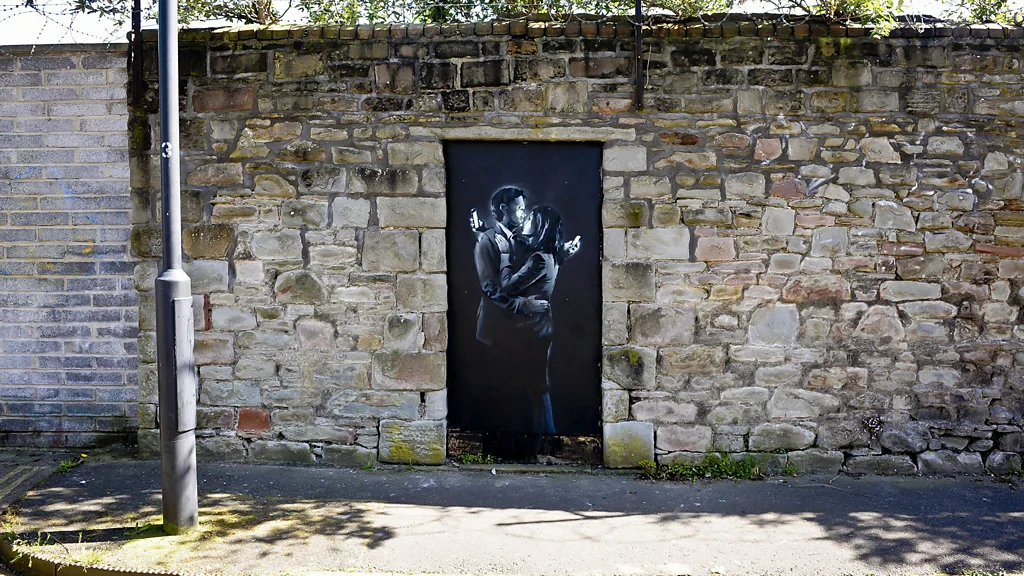
In Mobile Lovers, a couple embraces—but their faces are turned away, illuminated not by each other’s eyes but by their smartphones.
This work mirrors Simone de Beauvoir’s warnings in The Ethics of Ambiguity, where she emphasized the importance of genuine human connection. De Beauvoir believed freedom and authenticity come from being present and engaged with others, not lost in distractions.
Banksy philosophy in this mural is painfully relevant: technology, which promises connection, often leaves us more isolated than ever.
5. Marseille Lighthouse – A Bollard’s Dream of Becoming Light
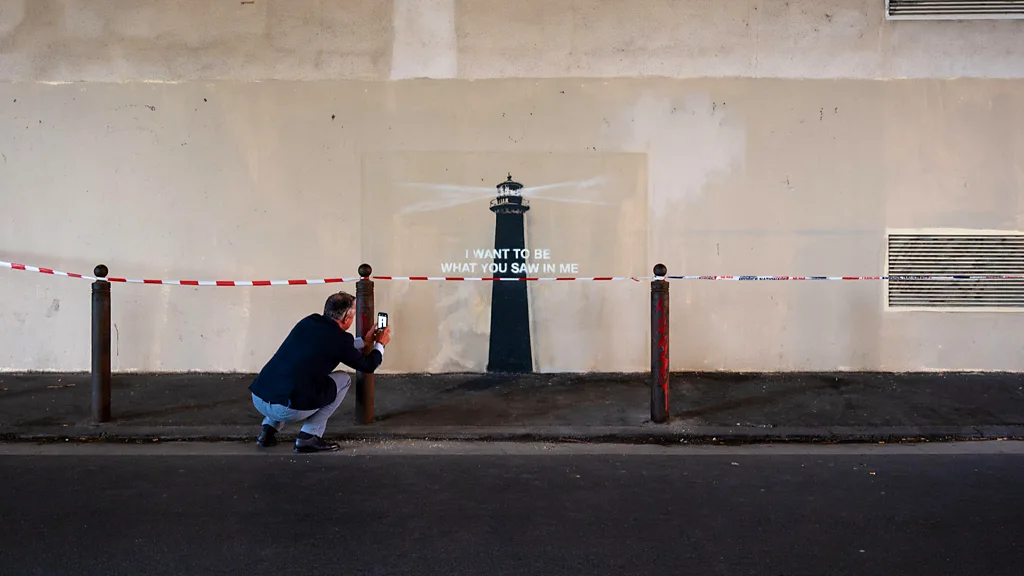
Banksy’s newest mural in Marseille depicts a rusted bollard casting the painted shadow of a lighthouse, accompanied by the words: “I want to be what you saw in me.”
This poetic reversal flips Plato’s Allegory of the Cave on its head. Plato wrote about prisoners mistaking shadows for reality, but Banksy offers something new. The ordinary object (the bollard) aspires to become its shadow (the lighthouse)—a symbol of guidance and hope.
Is reality the present state or the potential within us? The mural asks if we are who we are now, or who we could become if someone believes in us. In typical fashion, Banksy philosophy invites us to see transformation as truth.
Why Banksy Philosophy Resonates Today
What makes Banksy philosophy so compelling is its accessibility. His artworks don’t require academic training to understand. They don’t hang in galleries. They live on city walls, reaching passersby with messages that are both immediate and timeless.
Banksy strips philosophy of its elitism and places it back in the hands of the people, where it arguably belongs. Whether critiquing war, capitalism, surveillance, or loneliness, his art makes us pause, reflect, and often laugh—before feeling something deeper.
Conclusion: Banksy as the Philosopher of the Streets
Banksy may hide his face, but his ideas are out in the open. Through stencils and shadows, wit and warning, he has turned the streets into a stage for society’s most pressing ethical and existential questions.
Banksy philosophy is not about giving answers—it’s about asking better questions. What do we value? What blinds us? And who do we choose to become?
The next time you see a Banksy, don’t just admire the style. Listen to what it’s saying.
Don’t Miss Out! Get the Latest News, Tips, and Updates from Us!

